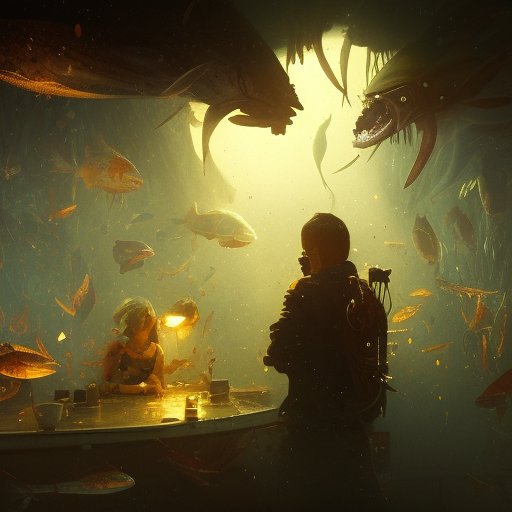
Welcome, fellow space travelers! Today, we’ll be exploring the striking similarities between AI-generated articles and torture. As we delve into the science behind AI, we’ll see how it creates repetition and monotony, much like a torture technique. But is it ethical to use AI for content creation when it lacks empathy and creativity? Could the future of content creation lie in AI? We’ll dive deep into these questions and more. So, grab your jetpacks and buckle up for an out-of-this-world ride through the fascinating world of AI and torture!
I. Introduction
Greetings, fellow sci-fi enthusiasts! Today, we’re going to talk about something that might seem a bit strange to the uninitiated, but perfectly natural to us: the similarities between AI-generated articles and torture.

Now, some of you might be scratching your heads, wondering what the heck I’m talking about. But bear with me, my friends! As we dive deeper into this topic, you’ll see that there are some fascinating parallels between the two.
First off, let’s talk about repetition. Have you ever read an AI-generated article that seemed like it was stuck on repeat? Like it kept saying the same thing over and over again, just phrased slightly differently? That’s kind of like what they do in torture, isn’t it? They repeat the same question or statement, hoping to get a different answer.
And then there’s monotony. Have you ever been subjected to an AI article that was just plain dull? Like, it felt like you were reading the same thing over and over again, just with different words? That’s kind of like what they do in torture, too. It’s all about grinding you down until you’ll say anything just to make it stop.
Now, I know what you’re thinking. “But, oh great sci-fi writer, how can you compare something as innocuous as an AI-generated article to something as heinous as torture?” And to that, I say: it’s all about perspective, my friends. While we may not be physically tortured by an AI article, the mental toll it takes on us can be just as draining.
So buckle up, my fellow sci-fi companions! As we journey through this topic, we’ll explore the science behind AI, the ethics of using it for content creation, and the potential future of AI in content creation.
II. The Science Behind AI
Now, let’s get down to the nitty-gritty of how AI works and how it generates articles. First off, we need to understand that AI is all about learning. It’s like a digital brain, constantly analyzing data and patterns to improve its abilities.

To generate an article, AI first needs a dataset to pull from. This dataset can be anything from news articles to scientific studies to social media posts. Once it has this data, it starts analyzing it, searching for patterns and themes.
Using these patterns and themes, the AI begins to construct sentences and paragraphs. It can even generate multiple versions of a sentence, weighing the options to choose the best one based on various factors such as grammar and readability.
But it’s not just about randomly generating words and hoping they fit together. AI can also learn from examples of good writing, using pre-written articles as a reference point. It can analyze the structure and tone of these articles, and use that knowledge to improve its own writing.
However, it’s important to note that AI is not perfect. It can still make mistakes, and it lacks the creativity and intuition of human writers. That’s why it’s important to have a human editor to review and refine the AI-generated content.
III. AI-Generated Articles vs. Torture
As we delve deeper into the comparison between AI-generated articles and torture, we can see that there are some striking similarities between the two. For starters, repetition is a significant feature of both. In an AI-generated article, it can feel like the same thing is being said over and over again, just rephrased slightly differently. This is a technique used in torture as well, where the same question or statement is repeated over and over again, hoping to elicit a different response.

Furthermore, monotony is another aspect that both AI-generated articles and torture share. Just as an AI-generated article can become dull and repetitive, torture can be a tedious and monotonous process. It’s all about wearing down the person being interrogated until they’ll say anything, just to make it stop.
In both instances, the victim can feel drained and overwhelmed. In an AI-generated article, the monotony and repetition can cause mental fatigue, while in torture, the physical and psychological effects can be debilitating.
But what about the intention behind the repetition and monotony? In an AI-generated article, it’s simply a product of the algorithm used to generate the content. There’s no malevolent intent behind it. In torture, however, it’s a deliberate tactic used to break down the person being interrogated.
However, it’s important to note that while there are certainly similarities between AI-generated articles and torture, they are by no means the same thing. While an AI-generated article may be dull and repetitive, it’s not actively trying to harm or manipulate the reader. On the other hand, torture is a heinous act that inflicts immense physical and psychological pain.
IV. The Ethics of using AI for Content Creation
Now, let’s delve into the ethical implications of using AI for content creation. We all know that creativity and empathy are quintessential human traits. But can machines mimic them? As we continue to rely on AI for content creation, we need to address these questions.

One of the primary ethical concerns with AI-generated content is the lack of creativity. Sure, an algorithm can churn out articles in seconds, but can it really replace the human ability to create something truly original? The same goes for empathy. An AI may be able to analyze data to create content tailored to a specific audience, but it can’t understand their emotions or truly connect with them.
Another concern is the potential for bias in AI-generated content. We’ve already seen examples of this with chatbots and other AI tools. If the data used to train these algorithms is biased, the content it generates will be biased as well. This poses a significant risk for perpetuating harmful stereotypes and promoting discriminatory ideas.
Furthermore, there’s the issue of accountability. Who is responsible for the content generated by AI? Is it the creators of the algorithm? The company who uses it? The machine itself? As AI continues to advance, these questions become more pressing.
V. The Future of AI and Content Creation
The future of AI and content creation is a wild and exciting frontier, my fellow sci-fi enthusiasts. With advancements in technology happening faster than you can say “light speed,” we can expect some pretty incredible things from AI-generated content.

For starters, imagine a world where AI can produce entire books, movies, or TV shows in a matter of seconds. No more long waits for new content, no more writer’s block or creative stagnation. AI could provide an endless stream of fresh and engaging material that keeps us on the edge of our seats.
But that’s just scratching the surface! AI could revolutionize the way we consume news and information, too. With content being produced faster than ever before, we could stay up-to-date on current events in real-time. Imagine reading an article that’s only a few minutes old, instead of a few hours or even days.
And let’s not forget about the potential cost savings for businesses. By automating content creation with AI, companies could eliminate the need for human writers and editors altogether. While this might be bad news for any struggling writers out there, it could also mean more resources for other areas of the business.
But, as with any new technology, there are also some potential downsides to consider. If AI becomes the dominant force in content creation, we might lose the charm and personal touch that comes with human writing. And who knows what other unintended consequences could arise from such rapid advancements in AI technology.
Nevertheless, we can’t deny that the future of AI and content creation is bright and full of possibilities. Whether we like it or not, the age of AI-generated content is upon us, and we can only sit back and watch as it unfolds before our very eyes.
VI. Conclusion
And there you have it, folks! The similarities between AI-generated articles and torture may seem like a strange comparison at first, but when you delve deeper into the topic, you start to see the striking parallels.

But the real question is, should we continue to use AI for content creation? Is it ethical to subject our readers to such repetitive and monotonous content? And what about the lack of empathy and creativity in AI-generated articles?
As we look to the future, it’s clear that AI has some exciting potential applications in content creation. But we must always consider the human element and the impact it has on us as readers.
So next time you’re reading an article and find yourself getting bored or frustrated with the repetition, just remember – you might be experiencing a form of mental torture! But don’t worry, my sci-fi companions, we’ll keep fighting the good fight for creative and engaging content!






